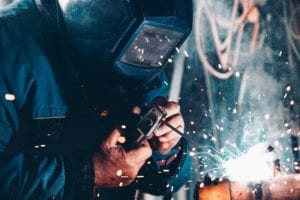Without welding, much of what we use—from gas stations to indoor plumbing—would look dramatically different. All welding processes are not the same. Different projects and applications require different welding approaches. Learn more about some of the most common welding processes and how they’re used.
Arc Welding
Arc welding is most commonly used to join metals, not plastics, and is especially prevalent in the automotive, energy, and aerospace sectors because of the strength and durability of the final product. This popular welding process encompasses metal inert gas (MIG) welding, tungsten inert gas (TIG) welding, metal active gas (MAG) welding, plasma arc welding, stick welding, and several other methods that use a heat source to join two or more materials together.

Friction Welding
Some metals, especially lightweight aluminum alloys, are referred to as “non-weldable” because they don’t react well to filler metals or gas. Without precautions, this can degrade the metal over time. To join these metals, welders often use mechanical friction like friction stir welding (FSW), rotary friction welding (RFW), and linear friction welding (LFW).
Laser Beam Welding
By directing a concentrated heat source onto the materials to be joined, laser welding can create precise welds ideal for automotive and aerospace applications. Laser welding can also join plastics and polymers just as easily as metal, making it one of the most versatile welding processes.
Resistance Welding
Most often seen in the auto industry, resistance spot welding and resistance seam welding can create leak-free welds quickly and inefficiently. Both spot and seam welding use electrodes (or rotating wheels) to weld a small area together while clamps are applied. Once the clamps are removed, the weld holds fast.
This isn’t an exhaustive list of welding methods, and new approaches are continually being developed and refined. However, even with advances in technology, many of today’s most welding-intensive applications rely on one of these time-tested methods.
